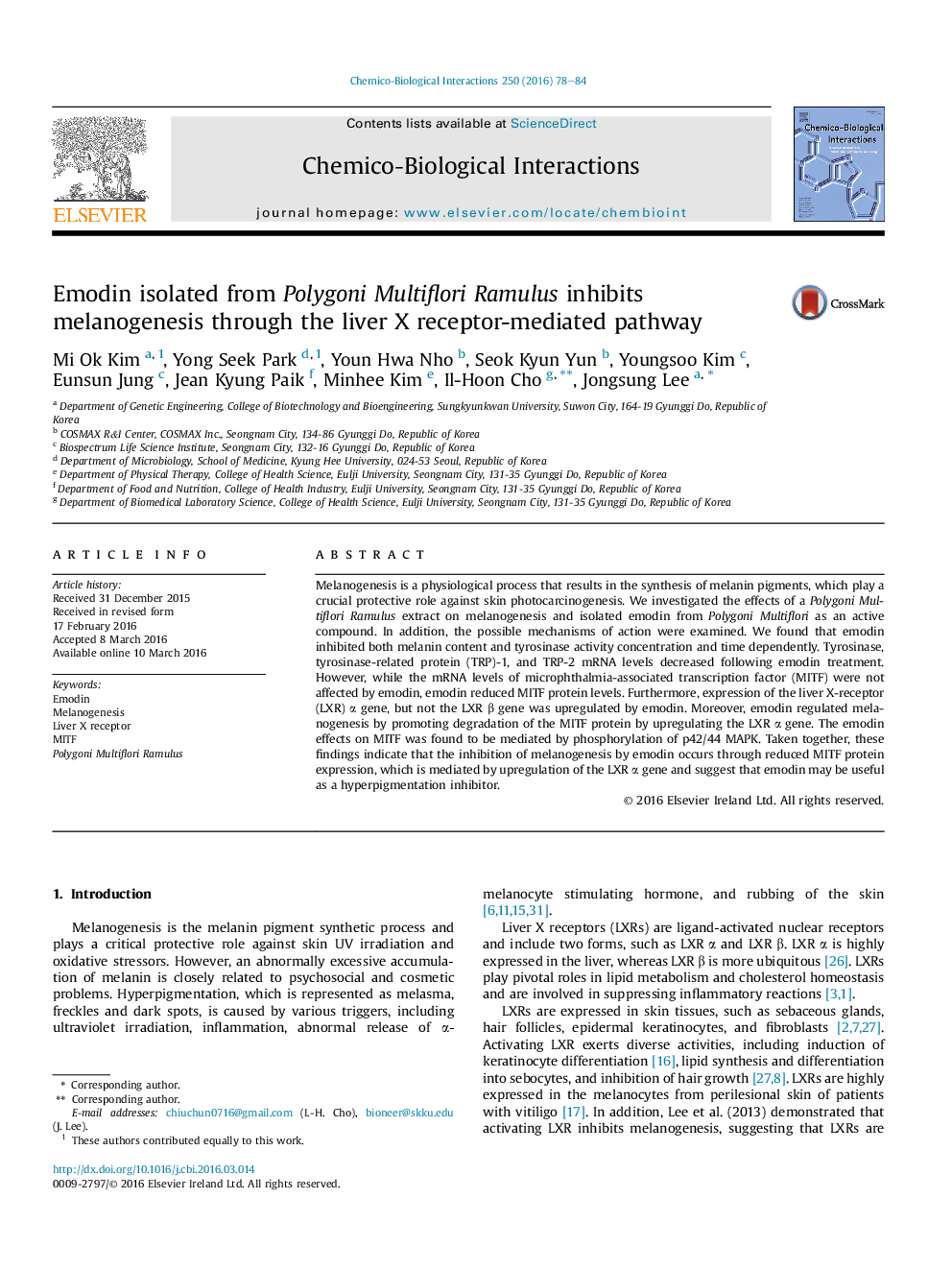| کد مقاله | کد نشریه | سال انتشار | مقاله انگلیسی | نسخه تمام متن |
|---|---|---|---|---|
| 2579934 | 1561591 | 2016 | 7 صفحه PDF | دانلود رایگان |

• Emodin reduced melanin content in human melanocytes.
• Emodin downregulated mRNA levels of tyrosinase, TRP-1 and TRP-2, but not MITF.
• Emodin led to a decrease of protein levels of tyrosinase, TRP-1, TRP-2, and MITF.
• Expression of LXR α gene, but not LXR β gene was upregulated by emodin.
• Emodin regulated melanogenesis by promoting degradation of MITF protein through upregulation of the LXR α gene.
Melanogenesis is a physiological process that results in the synthesis of melanin pigments, which play a crucial protective role against skin photocarcinogenesis. We investigated the effects of a Polygoni Multiflori Ramulus extract on melanogenesis and isolated emodin from Polygoni Multiflori as an active compound. In addition, the possible mechanisms of action were examined. We found that emodin inhibited both melanin content and tyrosinase activity concentration and time dependently. Tyrosinase, tyrosinase-related protein (TRP)-1, and TRP-2 mRNA levels decreased following emodin treatment. However, while the mRNA levels of microphthalmia-associated transcription factor (MITF) were not affected by emodin, emodin reduced MITF protein levels. Furthermore, expression of the liver X-receptor (LXR) α gene, but not the LXR β gene was upregulated by emodin. Moreover, emodin regulated melanogenesis by promoting degradation of the MITF protein by upregulating the LXR α gene. The emodin effects on MITF was found to be mediated by phosphorylation of p42/44 MAPK. Taken together, these findings indicate that the inhibition of melanogenesis by emodin occurs through reduced MITF protein expression, which is mediated by upregulation of the LXR α gene and suggest that emodin may be useful as a hyperpigmentation inhibitor.
Figure optionsDownload as PowerPoint slide
Journal: Chemico-Biological Interactions - Volume 250, 25 April 2016, Pages 78–84